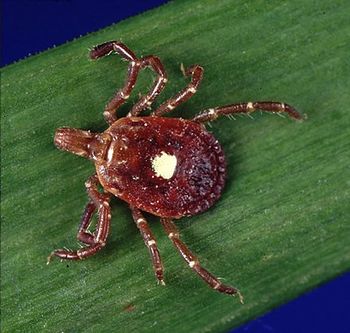
Oscillococcinum: Can It Really Cure Flu Symptoms?
A pharmacist cuts through the noise surrounding Oscillococcinum and its alleged role in flu management.
As flu continues to beat down on the United States, different headlines have been boasting several remedies that allegedly offer quick and natural restorative powers to those who have fallen ill with the virus.
Oscillococcinum, which markets itself like a natural oseltamivir, is one such product that has been gaining a lot of attention lately. The product has been around for decades and has enjoyed its share of both popularity and criticism. Social media buzz is active with individuals attesting to its efficacy.
However, the manufacturer of the product landed in hot water with the US Food and Drug Administration as well as the Federal Trade Commission in 2009/10 over purported claims of being able to cure the H1N1 influenza strain.
Oscillosoccinum's active ingredient is Anas barbariae hepatis et cordis extractum 200CK, which is made from the heart and liver of wild duck and is diluted repeatedly until essentially no molecules of duck heart or liver are found in the actual pill. Since wildfowl are a natural reservoir for influenza, and since nucleic and phosphoric compounds in the pill resemble influenza, it is thought that the combination contributes to antiviral activity. However, the exact mechanism of action is not well described.
The product's website cites 2 clinical studies indicating that it decreases the severity and duration of influenza-related symptoms. Both were placebo-controlled studies whose primary outcome included resolution of fever and other symptoms by or at 48 hours of treatment; each study showed a statistical advantage over placebo. Other studies, including multiple Cochrane systemic reviews (most recently in 2015), have been published.2
The 2015 Cochrane review evaluated 6 studies; 2 using Oscillosoccinum for influenza prophylaxis and 4 for the treatment of influenza. The review specifically commented on notable flaws and bias within the studies' methods; it concluded that there was no significant benefit of the product in preventing influenza, and, based on 2 low-quality rated studies, that there was an absolute risk reduction of 7.7% in flu-like symptoms compared with placebo after 2 days of Oscillococcinum use (P=0.001), but that a significant difference was no longer seen by day 4 of treatment (P=0.1). The authors ultimately concluded that Oscillococcinum may work, but the evidence was not strong or sufficient enough reach a definitive conclusion, particularly given the poor quality of the studies available.3 4
Another review by Marrari et al. published in 2012 looked at 3 studies, all published between 1988 and 1998.5 Two of the 3 studies were the sources cited on the product's webpage for proof of clinical efficacy. The authors' conclusion was in direct support of Oscillococcinum's efficacy. However, the conflict of interest section at the very end of the article indicates that all of the authors were employees of the product's maker; therefore, there is a strong potential for a potential biased conclusion and recommendation. Interestingly, studies looking at the active ingredient, Anas barbariae, outside of Oscillococcinum, are not readily retrievable.
Overall, Oscillococcinum is relatively safe. The inactive ingredients include sucrose and the most common side-effects seen in published studies were a headache, rash, itching, and myalgia. Each dose is approximately $1.10, which is cheaper than the approximate $5-7 per dose of the now generic oseltamivir, but still not inexpensive. It is interesting that given the potential Oscillococcinum showed in early studies, that subsequent large, well-designed studies were never conducted to definitively determine its efficacy.
The product is still being marketed based off of 2 older studies. Such studies would provide valuable answers to the role Oscillococcinum has in influenza management, but like with so many homeopathic products, it seems questions regarding that role will remain unanswered for the foreseeable future.
In the age of evidence-based medicine, what recommendation should be made when the evidence is inconclusive? The old adage "it probably won't help, but it won't hurt either" seems applicable.
Editor's Note: An earlier version of this article stated that the manufacturer received a warning letter from the FDA about off-label claims. The statement referred to a warning letter sent to 1 internet marketer who made off-label claims for many products during the influenza pandemic. The manufacturer requested the marketer to cease and desist making such claims, and ultimately stopped sales to this retailer.
References
- Boiron. Oscillococcinum. Newtown Square, PA.
- Mathie RT, Frye J, Fisher P. Homeopathic Oscillococciunum for preventing and treating influenza and influenza-like illness. Cochrane Database Syst Rev. 2015;1:CD001957.doi: 10.1002/14651858.CD001957.pub6.
- Ulbricht C, Chao W, Clark A, et al. Oscillococcinum (Anas barbariae hepatis et cordis extractum 200CK HPUS): an evidence-based systematic review by the Natural Standard Research Collaboration. Alternative and Complimentary Therapies. 2011;17:41-49.
- Papp R, Schuback G, Beck E, et al. Oscillococcinum in patients with influenza-like syndromes: a placebo-controlled, double-blind evaluation. Br Homeopath J. 1998;87:69-76.
- Marrari LA, Terzan L, Chauferrin G. Oscillococcinum for influenza treatment. Ann Ist Super Sanita. 2012;48:105-109.
Newsletter
Stay ahead of emerging infectious disease threats with expert insights and breaking research. Subscribe now to get updates delivered straight to your inbox.


























































































































































































































































































